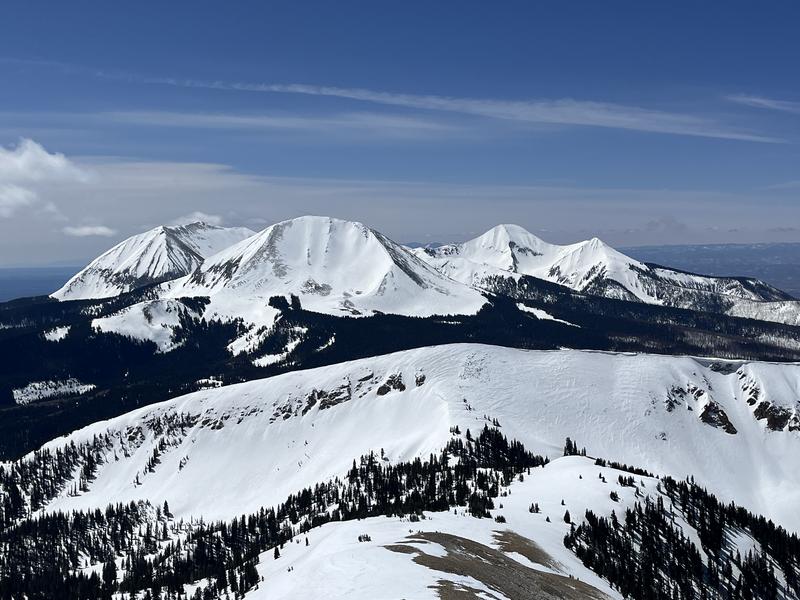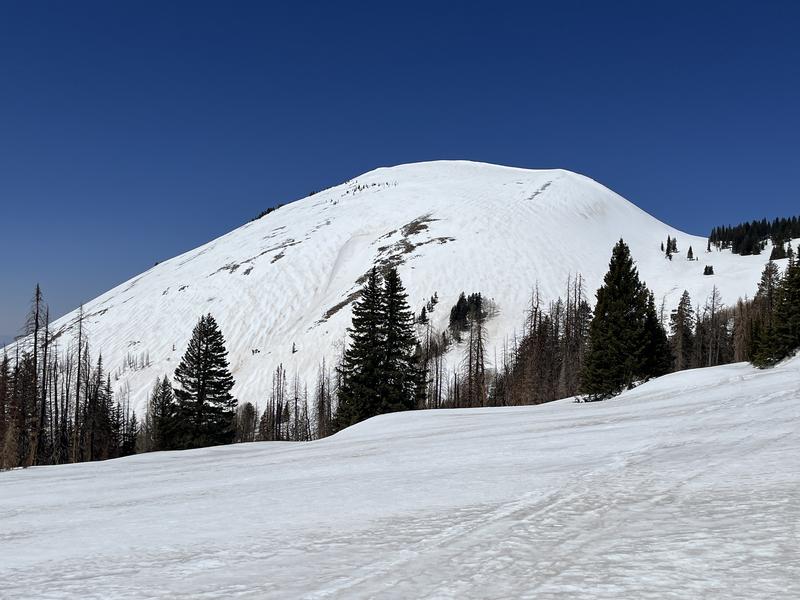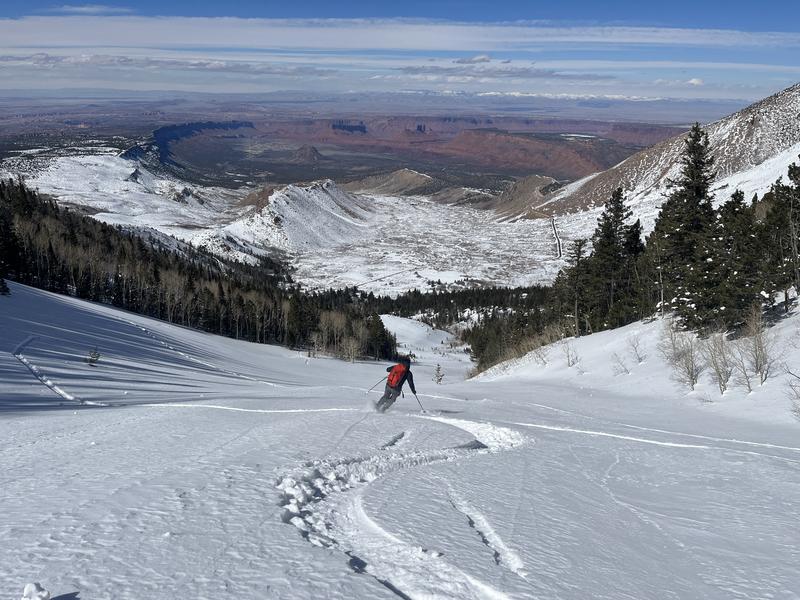Spring Time Avalanche Concerns
Timing is everything this time of year. Get in early and out early, both for the best snow conditions and to avoid the threat of loose, wet avalanches. Follow the sun and ride slopes with an easterly aspect first, then move to south, and finally west. Signs of instability include rollerballs, pinwheels, and sloppy wet snow. If you find yourself sinking into wet snow above your ankles, you're out too late.
Loose Wet Avalanches are the most common springtime avalanche hazard as a strong sun and warm temps melt and soften the snow surface. Signs of instability include rollerballs, pinwheels, and "point release" sluffs that fan out and gather more snow as they travel down the slope. Timing is everything this time of year. Work slopes according to their aspect in relation to the sun and get off of steep slopes as they become wet and sloppy.
Wet Slabs release when melt water saturates a layer in the snowpack and the over riding slab fails as a cohesive layer. These avalanches are harder to predict than loose wet, and outward signs of this problem are not obvious, but sloppy, wet, or punchy snow indicate that the pack is trending towards unstable. Successive nights without a freeze and warm daytime temps contribute to instability. Avoid thin shallow rocky areas and terrain under cliffs, especially if the snow is becoming wet and sloppy.
Cornices are huge this year. Give them a wide berth. Daytime hearting makes them particualrly susceptible to breaking off this time of year.
New Snow can cause the avalanche danger to rise just like in the winter. Poorly bonded new snow can cause problems on all aspects when there is more than about 6" of new snow. Loose snow sluffs and soft slab avalanches are possible. This type of instability typically settles out in a day or two.
Wind Drifted Snow can create unstable drifts or slabs on the leeward sides of ridge crests and terrain features. Recent wind drifts are recognizable by their smooth, rounded appearance and cracking is a sign of instability. Unstable wind drifts can linger for days or even up to a week.












